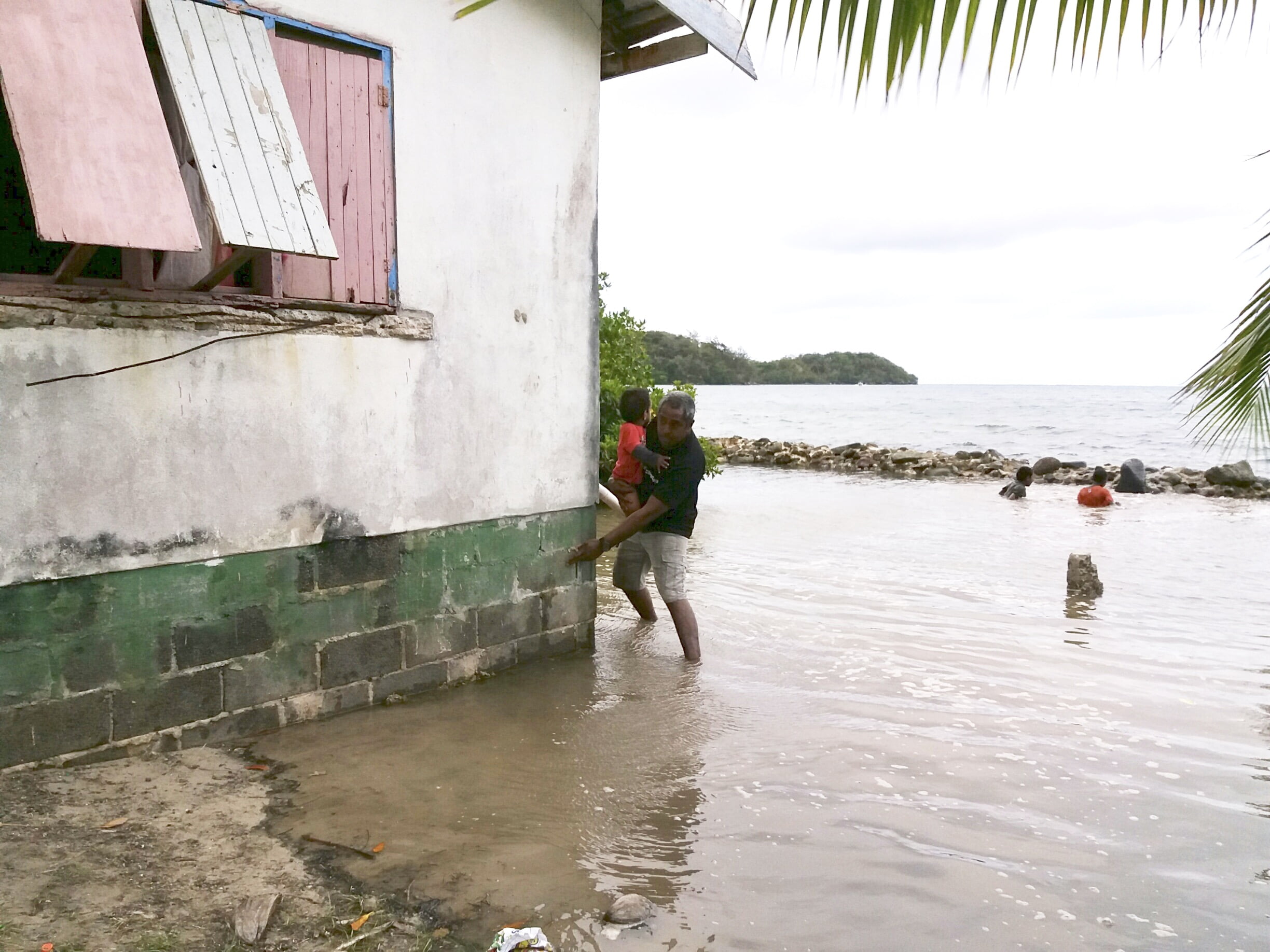As sea water encroached closer and closer to Kelepi Saukitoga’s family home over the years, he knew something was wrong. His family lives in the remote village of Narikoso – part of the Pacific island archipelago of Fiji – where climate change has started to uproot entire communities. When water entered his home, his family was forced to plan a relocation to higher ground.
“The rising sea is coming up to our doorstep every day and every night,” says Kelepi Saukitoga, a village leader who represented his community on the world’s stage at the Global Action Climate Summit in San Francisco. Fiji had a large presence at the summit and led last year’s COP23 climate change conference – an important step for an island nation that is already facing the severe effects of global warming, including more frequent and intense cyclones.
This week, the United Nation’s Intergovernmental Panel on Climate Change (IPCC) released a special report predicting greater risks of coastal flooding and increased sea level rise by the year 2100 if the world fails to drastically curb carbon emissions that are warming the planet. The report urges governments to cut greenhouse gases to limit the global temperature rise to 1.5 degrees Celsius instead of 2 degrees Celsius above pre-industrial levels. Right now, rising seas are already beginning to swallow small, low-lying islands in the Pacific.
More than 40 villages in Fiji will relocate to higher ground
In Narikoso village – located on the small Kadavu island group south of Fiji’s main island – the receding shoreline and rising waters have led to a host of problems for families living near the coast. Sea water has flooded fruit and vegetable gardens, polluted drinking water, devastated agriculture and cattle, and caused irreversible water-related cracks in concrete homes that have stood for years.
“Seawater enters seven of our homes, sometimes as much as four meters (13 feet) when the [high] tide comes,” he says. Saukitoga’s home is closest to the sea, and he’s in the first row of houses that will move this year. “We have only five to ten years before the house is gone,” he predicts.
His community is not alone. Fiji’s government announced last year that more than 40 villages across the island nation would be relocated to higher ground due to rising sea levels. Sea level rise is a direct consequence of climate change, according to the UN and the U.S. National Oceanic and Atmospheric Administration (NOAA). As global warming melts polar ice sheets and causes seawater to expand, sea level rise is accelerating worldwide.

“Some of Fiji’s communities will become uninhabitable. It is truly an existential crisis,” says Elisabeth Holland, director of the Pacific Centre for the Environment and Sustainable Development at the University of the South Pacific in Fiji. “A third of our communities will need to be moved. The social dimensions of that are huge,” she says.
Over the next century, sea levels around Fiji’s islands could rise by more than a meter (three feet), estimates Holland, who has also authored IPCC reports.
A family at the frontlines of climate change

A father of four boys, Saukitoga will be moving his entire family 100 meters (330 feet) inland to higher ground this year. “It will be a sad day when I will leave the home I grew up in, and where my children were born,” he says. “The memories of my mum and dad will be taken away.”
But, he says there’s no choice. “This is happening faster than before, so we have to find some place to move away since we cannot stay in this place anymore,” Saukitoga says. Fiji’s government, along with the European Union and the German Society for International Cooperation (GIZ) is supporting the relocation of families in Narikoso village. “They’re so resilient, they have the spirit of Pacific warriors,” says GIZ’s Josephine Prasad, who recently visited the island.
In Narikoso village, Saukitoga remembers seeing his own father and grandfather using natural materials to build sea walls that protected the village from coastal waters. “As a child, I watched them piling up rocks and planting mangroves just beside our house. I used to wonder what was going on,” he says.
After he finished his education in Fiji’s capital city of Suva, Saukitoga returned back to visit his parents in his small island village, and saw how much water had increased. “I realized there was something changing in this community,” he said. That’s when he decided to become a climate advocate for his village and help residents adapt to the rising coastal waters. Now, he serves as the Mayor of Narikoso, and has become the main voice of his community to Fiji’s national government – and the world.
“I’m not doing this just for my family,” Saukitoga says, “I’m looking out for future generations who will be affected by rising sea levels in 20 to 30 years.” He also points out this isn’t just a Fiji issue. “I just want to tell people of all coastal areas about this rising sea level. No one will get out of it, we’ll all face this rising sea level.”
